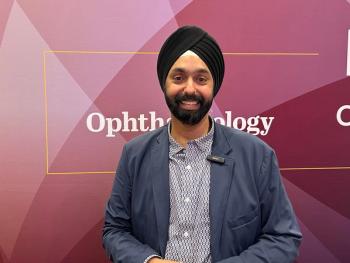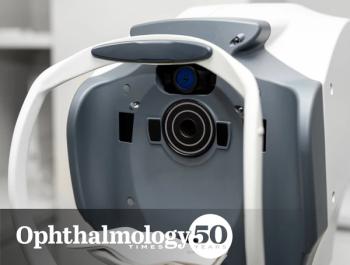
Study: LCS reduces use of ultrasound energy
Analyses of data from a large, prospective, comparative case series show that laser cataract surgery (LCS) significantly reduces use of ultrasound energy. Furthermore, outcomes from the most recent group of LCS cases shows that after laser lens fragmentation, cataract removal can be achieved in almost all eyes using aspiration only, said Burkhard Dick, MD, PhD.
Bochum, Germany-Analyses of data from a large, prospective, comparative case series show that laser cataract surgery (LCS) significantly reduces use of ultrasound energy. Furthermore, outcomes from the most recent group of LCS cases shows that after laser lens fragmentation, cataract removal can be achieved in almost all eyes using aspiration only, said Burkhard Dick, MD, PhD.
“After optimization of laser settings, instruments, and techniques, I am now close to reaching my final goal of eliminating ultrasound in cataract surgery,” said Dr. Dick, professor and chairman, Department of Ophthalmology, Ruhr-University of Bochum, Bochum, Germany.
Effective phaco time (EPT) was analyzed as a measure of ultrasound energy utilized during LCS using data from a prospective, consecutive cohort of 2,400 eyes. All eyes included in the analyses had a Lens Opacities Classification System (LOCS) III Nuclear Opalescence score of 1 to 4, as graded preoperatively by an independent European Vision Clinical Research Institute-certified physician, and pupil size >6 mm. All procedures were done using the same femtosecond laser (Catalys Precision Laser System, Abbott Medical Optics) and phacoemulsification platform (Stellaris Vision Enhancement System, Bausch + Lomb).
Dr. Dick first analyzed the outcomes for his initial 650 LCS cases and compared them with results from a group of 650 eyes in which he performed standard cataract surgery. Mean EPT for eyes with LOCS III grade 2, 3, and 4 cataracts operated on with standard phacoemulsification was 1.52, 2.48, and 3.38 seconds, respectively, but only 0.01, 0.06, and 0.23 seconds, respectively, for the LCS group.
The difference between the LCS eyes and the standard phaco groups was statistically significant for all cataract grades. Overall, about 70% of LCS cases were performed with no ultrasound energy.
Subsequent to these cases, Dr. Dick introduced several optimizations into his procedure. The most prominent modification related to phaco tip design, but another change involved extension of the area of lens fragmentation. These modifications enhanced the efficiency of LCS as shown in analyses comparing EPT outcomes for consecutive groups of 1,000 eyes each undergoing the laser-assisted or standard surgery. For eyes with grade 2, 3, and 4 cataract, LCS reduced EPT by 100%, 97%, and 98%, respectively, and allowed 95% of all cases to be performed without ultrasound.
Dr. Dick noted that in his last 400 cases-which were done with a slight further change in tip design-ultrasound energy was needed to remove the cataract in only 3 eyes, all with a LOCS III grade 4 cataract.
To address possible criticism that LCS increases fluid turnover and surgical time, Dr. Dick analyzed data on BSS use and procedure time, beginning from suction on in the LCS cases. He found no differences comparing LCS and standard surgery groups.
“Total surgical time for the LCS cases averaged 6.5 minutes, of which about 2 to 2.5 minutes was for the laser portion of the procedure,” he said. “After use of the laser, the rest of the procedure takes less time than when performed manually,” he said.
For more articles in this issue of Ophthalmology Times eReport, click here.
To receive weekly clinical news and updates in ophthalmology,
Newsletter
Don’t miss out—get Ophthalmology Times updates on the latest clinical advancements and expert interviews, straight to your inbox.




















































.png)


